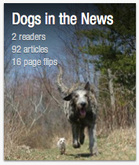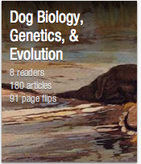
Are mixed-breed dogs healthier than purebreds? Not really, say researchers at UC Davis. There are differences, however, in the disorders that are most common in each group, and the list for purebreds is a bit longer. Purebreds suffer from aortic stenosis, cardiomyopathy, hypothyroidism, elbow dysplasia, allergic dermatitis, cataracts, epilepsy, and portosystemic shunt, among others. Mixed-breed dogs are prone to cruciate ligament rupture. But a long list of genetic disorders are found with equal frequency in both mixed and purebred dogs, including a variety of cancers, hypertrophic cardiomyopathy and a number of other cardiac disorders, hip dysplasia, several endocrine disorders, and lens luxation. (more)
 RSS Feed
RSS Feed





